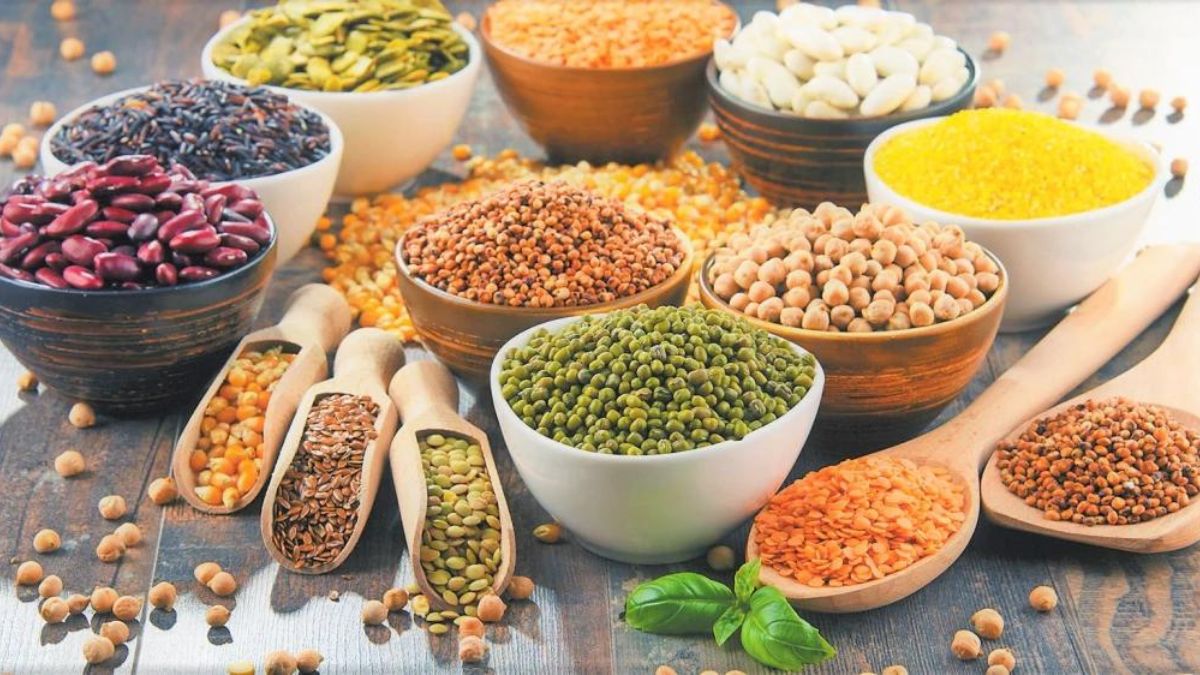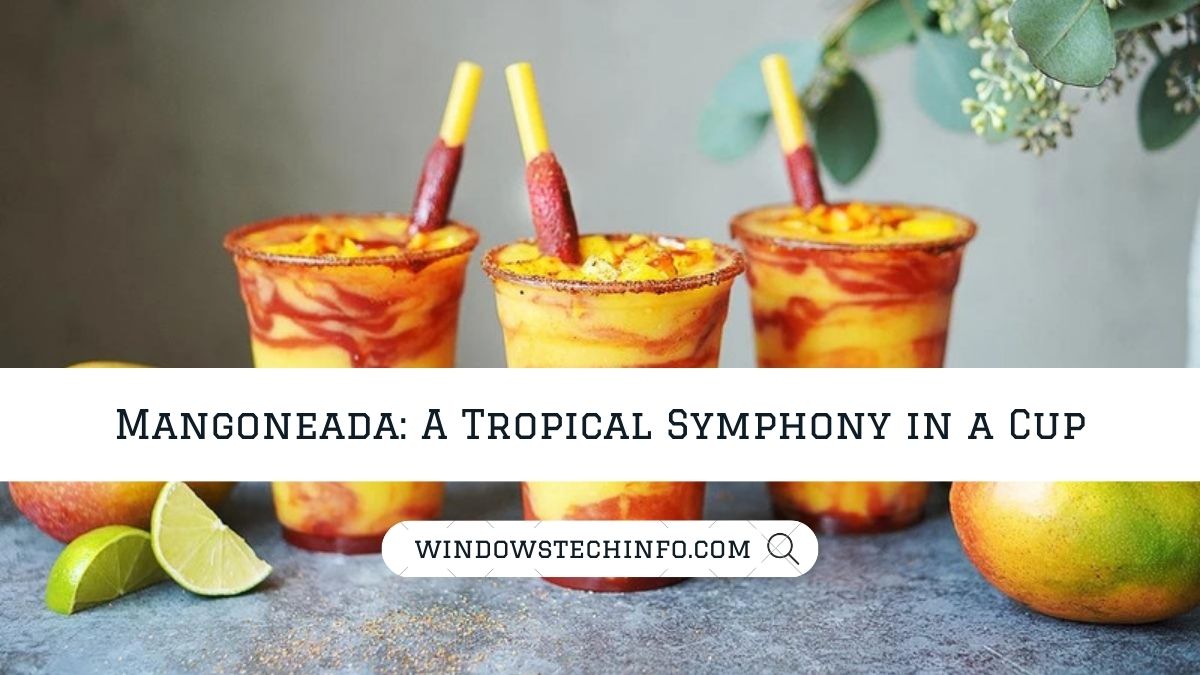FOOD
Rize Tea: Unraveling the Secrets of Turkey’s Beloved Brew

Rize Tea is a special and beloved beverage in a world where tea is widely consumed. Rize Tea, named for the beautiful Turkish province from where it originates, has won the hearts of tea drinkers throughout the world. This article goes into the cultural importance, health advantages, and more of Rize Tea, as well as its extensive history, unique varieties, and extraordinary features.
1.Introduction to Rize Tea
2.From Rize’s Heart to the World’s Cup
Rize Tea, or Rize ay in Turkish, is a black tea with a rich history and a renowned reputation for flavor and scent. Grown between the Black Sea and the Kaçkar Mountains in Turkey’s far northeast. Rize Tea’s distinct flavor character is a result of its rare geographical position in combination with conventional harvesting and processing techniques.
3.The Origins of Rize Tea
A Tea with a Tale
The origins of Rize Tea may be traced back hundreds of years. Laz immigrants brought it to the area in the late 19th century. Tea was first grown in Rize because of the city’s favorable climate and fertile soil. Rize Tea, a staple of Turkish culture, is the product of a centuries-old cultivation and harvesting history.
4.Types of Rize Tea
A Spectrum of Flavors
Every kind and quality of Rize Tea has its own distinct flavor profile. Rize Ekşioğlu, Rize Sürmene, and Rize Güneysu are the most popular varieties. Tea lovers may select their ideal beverage from among these options, which range widely in taste, scent, and intensity.
5.The Unique Flavor Profile
A Symphony of Taste and Aroma
The strong and earthy flavor of Rize Tea has earned it widespread acclaim. The local temperature, soil, and traditional processing methods all contribute to the tea’s distinctive, robust flavor. The tea has just the right amount of zing and sweetness, making it a treat at any time of day.
6.Health Benefits of Rize Tea
More Than Just a Beverage
Rize Tea is not only delicious, but also has many positive health effects. It has a high concentration of antioxidants, making it a valuable tool in the fight against chronic illness. The natural chemical theanine found in it aids in both relaxation and concentration.
7.Preparing and Brewing Rize Tea
Mastering the Art of Brewing
Brewing It takes skill to make Rize Tea. Factors including water temperature, steeping duration, and how many tea leaves to utilize must be carefully considered. The final product is a delicious and relaxing tea that honors local traditions.
8.Rize Tea and Turkish Culture
A Social and Cultural Staple
In Turkey, Rize Tea is a symbol of national pride. It’s typically given in smaller glasses so that drinkers may sip it frequently throughout the day. Having tea together is a great way to bring people together and strengthen relationships.
9.Rize Tea vs. Other Teas
What Sets Rize Tea Apart
The superior features of Rize Tea become clear when compared to those of other black teas. Its origin narrative and distinctive flavor set it apart from other teas. Rize Tea is a fan favorite among tea connoisseurs because of its unique flavor and aroma.
10.Where to Buy Rize Tea
Bringing Rize to Your Home
In addition to its widespread availability in Turkey, Rize Tea is also exported to other countries due to its high demand. You may find it at Turkish markets, niche internet stores, or your neighborhood tea shop. To guarantee the highest quality, purchase only from dependable vendors.
11.Exploring Rize Tea’s Popularity
A Global Phenomenon
Rize Tea, originally from Turkey, has amassed a sizable international fan base in recent years. Those in search of a novel tea experience will like its flavor and health advantages.
12.Sustainability and Rize Tea
Cultivating a Green Future
Rize Tea shares the industry’s emphasis on sustainability. In order to protect the environment and maintain the high quality of their tea, several farmers in the Rize area have adopted eco-friendly and sustainable farming methods.
13.Rize Tea: A Culinary Ingredient
Beyond the Teacup
Rize Tea may be used for many purposes outside just drinking. It’s also a common element in cooking, giving foods a special, subtle twist. Any dish, sweet or savory, may benefit from the use of Rize Tea.
14.Rize Tea in Popular Culture
Tea in Entertainment
Rize Tea is a popular beverage in Turkish popular culture, appearing in books, films, and TV shows. The Turkish people’s affection for it has only grown as it has evolved into a cultural emblem.
15.Customer Reviews and Testimonials
What Tea Lovers Have to Say
Do not just rely on our word. Find out what other tea drinkers think of Rize Tea by reading their reviews. You may read testimonials from satisfied customers and hear firsthand accounts of its extraordinary characteristics.
16.Conclusion
In conclusion, Rize Tea is much more than a simple drink; it is a treasured emblem of history and a sensual pleasure. It’s no surprise that Rize Tea has captivated the hearts of people all over the world given its one-of-a-kind taste, illustrious past, and plethora of health advantages.
17.FAQ’s
1.Where can I buy authentic Rize Tea?
Rize Tea is sold at authentic internet retailers, specialized tea shops, and authentic Turkish marketplaces.
2.What makes Rize Tea different from other black teas?
The environment and processing methods in the Rize area are responsible for the distinctive flavor of Rize Tea.
3.How do I brew the perfect cup of Rize Tea?
Pay close attention to the water temperature and steeping duration when preparing Rize Tea. If you want perfect results, stick to a tried and true formula.
4.What are the health benefits of Rize Tea?
The theanine included in Rize Tea helps to both strengthen the immune system and help you unwind.
5.Is Rize Tea only popular in Turkey?
Rize Tea’s distinct flavour and cultural significance have helped it win fans all over the world.
FOOD
çeciir: Unveiling the Versatile Legume

Chickpeas, or çeciir, are the unsung heroes of the nutritional and gastronomic world. This humble bean has been given much praise for its adaptability and numerous health advantages, but it also has a long and interesting cultural past and a special position in the cuisines of many countries.
Understanding the Significance of çeciir
The seeds of chick or Cicer arietinum because they are known in the scientific community, are full of nutrient-rich legumes that have been farmed for millions of years. Small, spherical, and beige, beans are an excellent supply of plant-based protein, fiber, vitamins, and minerals. Their beneficial impact on health and nutrition has secured them an important place in the diets of numerous individuals.
çeciir and Its Historical Roots
The use of çeciir as a staple meal may be traced back to the ancient civilizations of Mesopotamia and the Mediterranean. In all likelihood, chickpeas were first cultivated about the year 7500 BCE. These legumes are so important to humanity that they are described in ancient documents and have even been discovered in archaeological digs.
The Cultural Impact of çeciir
For many individuals, chickpeas symbolize a key component of their heritage of culture, as well as a food staple. Popular foods in the region of the Middle East that include chickpeas include hummus and fritters. Similar to the way chickpeas are used in Indian cuisine, specifically in the chana spice mixture and chickpeas stew.
Health Benefits of Consuming çeciir
There are several advantages to your health from eating chickpeas. They are a great supplement to a vegetarian or vegan diet since they provide so much protein. The high fiber content of chickpeas makes them a useful food for promoting digestive health and weight management.
çeciir in Culinary Delights
One of the extremely numerous characteristics that make chickpeas so special is how versatile they are in the kitchen. It’s conceivable to make anything from flavourful stews to refreshing sandwiches with these beans. Given their versatility, chickpeas may be used in both sweet and savory applications due to their subtle flavor and pleasing texture.
çeciir: A Sustainable Crop
Chickpeas help create a more sustainable agricultural system, which is one of its main benefits. Crop rotation that includes chickpeas is beneficial because of the legume’s famed nitrogen-fixing abilities. Moreover, they are a sustainable crop since their strong roots stop the soil from washing away.
How to Grow çeciir in Your Garden
Chickpeas are an easy crop to cultivate in the garden for those who enjoy doing so. The only thing that they need is some sort of well-drained soil for them to thrive in. To make sure you have an uninterrupted supply of these healthy legumes, as well you may intend to plant some chickpeas in the gardens.
çeciir Recipes for a Flavorful Experience
Chickpeas have been known to improve the aroma of an extensive range of cuisines, both conventional and otherwise. You could prepare a delicious chickpea salad with chopped herbs and a lemon dressing or cook up an extensive chickpeas and vegetable stew. All sorts of happenings are possible.
çeciir: Nutritional Value
Chickpeas provide a wealth of beneficial nutrients. The protein, dietary fiber, folate, and manganese contained in only one cup of cooked chickpeas is remarkable. They’re minimal in fat, thus being good for the coronary arteries likewise.
çeciir in Global Cuisine
The humble chickpea has made its way into a broad variety of cuisines throughout the world. Pasta e ceci is a popular pasta dish in Italy that features these beans as the main component. Cocido madrileño, a traditional Spanish stew, features chickpeas as an important ingredient.
çeciir in Popular Culture
It’s not just in the kitchen where chickpeas have had an impact. They have become a cultural icon for vegetarianism and good eating. Hummus and other chickpea-based foods have become increasingly mainstream across the world.
çeciir: Challenges and Concerns
Chickpeas have many uses and advantages, but growing them isn’t without its difficulties. Some illnesses and pests can infect them, therefore taking preventative measures is essential. The harvest of chickpeas can also be affected by the weather.
Embracing çeciir in Your Diet
You should incorporate chickpeas into your daily meals on an ongoing schedule to take full advantage of their many uses and health benefits. These legumes are frequently used to serve as a nutritional and tasty ingredient in a variety of different foods, such as salads, sandwiches, soups, and some snacking.
Conclusion
Finally, chickpeas (or çeciir) are a highly adaptable legume with significant cultural and medical value. Along with having a significant role in environmentally conscious farming, its versatility in culinary applications also makes it an emerging force in the restaurant scene. When you dig down a bowl of guacamole or a bowl of garbanzo stew, go back on the chickpea’s remarkable trip from farm fields to your dining area.
FAQs
Are chickpeas and garbanzo beans the same thing?
In response to your question, both chickpea and garbanzo beans are synonyms that refer to the same bean.
Can I grow chickpeas in my backyard garden?
Absolutely! Chickpeas may be grown successfully in a home garden by the average gardener.
What are the health benefits of consuming chickpeas regularly?
Chickpeas are a nutrient-dense, healthy-for-the-heart food that also helps with digestion.
What is the origin of chickpeas?
These legumes have an extensive past and are thought to have originally originated in the region known as the Middle East.
How can I incorporate chickpeas into my daily meals?
Baked chickpeas are an excellent appetizer that can also be made either through or without the incorporation of chickpeas into other recipes.
FOOD
Unveiling the Marvels of Kapustapusto: A Comprehensive Guide to a Unique Culinary Experience

Among the many delectable dishes available, Kapustapusto stands out as an unforgettable treat thanks to its one-of-a-kind combination of ingredients and cultural influences. Kapustapusto is an interesting meal, and this page gives readers a thorough introduction to it by exploring its history, ingredients, and preparation technique.
Understanding Kapustapusto
Eastern European countries, including Russia and Ukraine, are home to the gastronomic treasure known as kapustapusto. The varied cultural influences and long history of the area have left their mark on Kapustapusto, a robust cabbage-based cuisine that has changed little over the years. The very name is a combination of the terms “kapusta,” meaning cabbage, and “pusto,” meaning empty or hollow; this demonstrates how the imaginative combination of ingredients elevates the humble cabbage to the level of a culinary masterwork.
The Ingredients
- Cabbage: The main attraction, cabbage is the base of Kapustapusto. Its substantial taste and adaptability make it an ideal base for the plethora of components that come after it.
- Meat: Pork or sausage is a common ingredient in kapustapusto, which gives the meal a savory flavor and protein. With its smokey, meaty flavor, this item has the potential to completely transform the meal.
- Grains: Kapustapusto is typically enhanced with barley or rice to create a robust and satisfying dish. With each mouthful, the grains bring out the other flavors and create a symphony of flavors.
- Vegetables: The dish’s colorful and lively character is enhanced by carrots, onions, and bell peppers. The meat’s savory overtones are balanced by the sweetness and depth imparted by these veggies.
- Seasonings and Spices: Kapustapusto gets its rich, fragrant flavor from a blend of garlic, paprika, and bay leaves. To take the cuisine to the next level, the spices must be carefully chosen and balanced.
The Art of Preparation
- Chopping and Sautéing: Start by carefully chopping the bell peppers, cabbage, onions, and carrots. Put these veggies in a big saucepan and sauté them until they soften and unleash their flavors.
- Meat Integration: Brown the selected meat and let it flavor the dish. The richness and intricacy of Kapustapusto are enhanced by this phase.
- Grain Addition: Add the grains and mix to combine so they absorb all of the meat and veggie flavors. This process adds to the dish’s filling texture as well.
- Spice Harmony: Create a symphony of flavors by introducing the spices and seasonings in a balanced manner. Simmering the mixture helps the flavors combine and creates a delicious consistency.
- Simmering to Perfection: Simmer the ingredients in the Kapustapusto for a few hours so they may combine and create a layered, rich flavor. To bring out this culinary masterwork to its maximum flavor, slow cooking is essential.
Conclusion
Finally, Kapustapusto is more than just food; it is a memorial to the rich history and innovative spirit of Filipino cuisine. Its long history, careful preparation, and distinctive combination of ingredients make it an absolute must-try for foodies. No matter your level of experience in the kitchen, delving into the realm of Kapustapusto will take you on a culinary adventure that will satisfy your cravings for Eastern European food and teach you to appreciate its artistic side. Get ready for a culinary adventure with Kapustapusto by rolling up your sleeves and gathering the ingredients!
FAQs
What does the name “Kapustapusto” mean?
The term “Kapustapusto” is an amalgam of the terms “kapusta,” meaning cabbage, and “pusto,” meaning empty or hollow. Showing how an average cabbage may be made into a tasty and filling dinner, illustrates the innovative use of ingredients.
Is Kapustapusto a vegetarian dish?
Even though kapustapusto can be made vegetarian by leaving out the meat, traditional recipes usually call for pork or sausage. Nevertheless, the dish’s adaptability permits personalization to accommodate different nutritional choices.
Can I use other types of cabbage for Kapustapusto?
In a heartbeat! While green cabbage is the most typical, red or Savoy cabbage are great alternatives that will give your dish a unique twist. Cabbage comes in a variety of varieties, each with its distinct taste and texture.
What is the significance of grains in Kapustapusto?
Kapustapusto would not be the same without the addition of grains like barley or rice, which provide bulk and nourishment. They improve the dish’s flavor and texture by soaking up the flavors of other ingredients.
Are there regional variations of Kapustapusto?
Indeed, Kapus tapusto may be found in a variety of forms across Eastern Europe. By drawing on regional ingredients and cooking techniques, each area’s version of the meal may be unique. A wide variety of Kapus tapusto experiences can be had by delving into these variants.
FOOD
Mangoneada: A Tropical Symphony in a Cup

The entire world has been captivated by the mangoneada, an exquisite combination of Mexican preferences. Mangoneada has gone from becoming an unknown favorite to an international phenomenon, largely due to its seductive mixture of sweet, spicy, and acidic characteristics that manage to overcome barriers in cultures.
1. Unveiling the Origin Story
The rich history firmly ingrained in Mexican culture is at the center of every Mangoneada. Over the years, this frozen delight has transformed, staying true to its roots but including new flavors influenced by varied global tastes, all while drawing inspiration from the rich culinary tapestry of the area.
2. The Art of Crafting: Ingredients and Variations
A meticulous selection of ingredients is necessary to make the ideal Mangoneada. A symphony of tastes is defined by this tropical pleasure, which includes juicy mangoes, chile powder, and chamoy. Perfection in balancing sweetness, spice, and acidity may be yours as you peruse the recipes.
3. Mangoneada and Mexican Culture
Mangoneada is a symbol of Mexican culture as much as it is a drink. This frozen confection has become a universal symbol of celebration, enjoyed by people of all ages at anything from street sellers to family get-togethers.
4. Global Craze: Mangoneada Beyond Borders
The world’s population adores Mangoneada. Because of its distinctive taste, it has won over people all over the globe. Our eyes are captivated by the interesting ways in which many areas are embracing this exotic delight, putting their unique spin on the basic recipe.
5. Sip, Share, and Socialize: Mangoneada in the Digital Age
With the rise of modern media, Mangoneada has gone viral, taking over sites like TikTok and Instagram. Find out what’s new, what people are struggling with, and how fans are getting creative with their online displays of this tropical joy.
6. Health Benefits of Mangoneada
Despite its decadent taste, Mangoneada has several good health advantages. Learn about the health benefits of the main components and how enjoying this dessert in moderation may make you feel good.
7. DIY Mangoneada Bar: A Personalized Experience
You may recreate the Mangoneada bar experience in the comfort of your own home. With this entertaining and engaging notion, guests may put their spin on this tropical symphony, making every event more unique.
8. Mangoneada Shops: The Rise of Trendy Establishments
Dedicated businesses serving Mangoneada have sprung up to meet the demand, and they provide a wide range of tastes with distinctive twists. Learn about the history of Mangoneada businesses and the unique experiences they give.
9. Mangoneada vs. Other Frozen Treats: What Sets It Apart?
The unique things that set Mangoneada apart are brought to light when compared to other frozen delicacies. Explore the cultural importance, textural differences, and flavor similarities that make Mangoneada unique.
10. The Art of Presentation: Capturing the Perfect Shot
Mangoneada is all about presentation as much as it is about flavor. Master the art of presentation and find out how to take the ideal Instagram photo to take your Mangoneada experience to the next level.
11. Challenges in Making Mangoneada: Tips for Success
Difficulties may develop for individuals who venture into the realm of Mangoneada making. Make sure everything goes off without a hitch every time by learning to spot typical problems and implement solutions.
12. Future Trends: The Ever-Evolving Mangoneada Landscape
For Mangoneada, what is ahead? Look at forecasts on how the world of Mangoneada will change in the next years based on new trends, tastes, and combinations.
13. Conclusion
In conclusion, Mangoneada is an exploration of culture, taste, and creativity, not only a frozen dessert. Enjoy a tropical symphony that has no boundaries as you sip Mangoneada on the streets of Mexico or make your rendition in the comfort of your own home.
14. FAQs
1. Can I make Mangoneada with frozen mangoes?
Sure thing! To make your Mangoneada even more delightful, try using frozen mangoes.
2. What’s the best way to balance the spiciness in Mangoneada?
Find the sweet spot by playing about with the amount of chili powder; a little goes a long way.
3. Are there any non-spicy alternatives for Mangoneada?
You may use Tajin spice instead of chili powder if you like a milder flavor.
4. Can I use other fruits in Mangoneada?
You may add a modern spin by trying it with watermelon or pineapple instead of the classic mango.
5. How long can I store Mangoneada in the freezer?
If you must preserve mangoneada, eat it within a week for the most texture and flavor, but it is best eaten fresh.
-

 TECH8 months ago
TECH8 months agoExploring the Exciting Features of PHP Version 8.1 for Enhanced Web Development
-

 CRYPTO4 months ago
CRYPTO4 months agoUnlocking the Potential: Understanding WalletConnect là gì
-

 NEWS5 months ago
NEWS5 months agoBestadvise4u.com News: Your Gateway to Informed Living
-

 ENTERTAINMENT5 months ago
ENTERTAINMENT5 months ago“кинокрадко” – Unmasking the Culprit Behind Film Piracy
-

 TECH4 months ago
TECH4 months ago“몽세리 266b+v”: Revolutionizing Technology for a Better Future
-

 HEALTH6 months ago
HEALTH6 months agoTough Tissue Muscle Connector: The Unsung Heroes of Movement
-

 WINDOWS11 years ago
WINDOWS11 years ago(solved)-Windows update cannot currently check for updates, because the service is not running. You may need to restart your computer
-

 WINDOWS9 years ago
WINDOWS9 years ago(Solved) – “How do you want to open this type of file (.js)?” Windows 8/8.1
